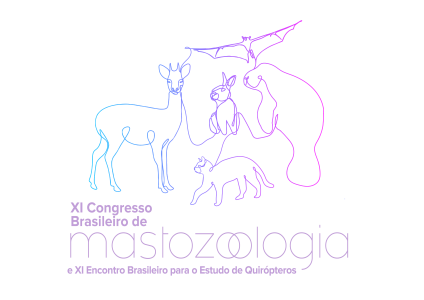Dados do Trabalho
Título:
GENETIC CONNECTIVITY AMONG LARGE POPULATIONS OF PTERONOTUS GYMNONOTUS IN BAT CAVES IN BRAZIL, AND ITS IMPLICATIONS FOR CONSERVATION.
Resumo:
Commonly referred to as bat caves, some caves found in the Neotropical region are characterized by sheltering exceptional bat populations (some reaching > 100,000 individuals). Bat caves are considered important ecological and conservation sites. Their populations take part in a wide range of ecological interactions, are particularly vulnerable due to their restriction to confined cave roost and, therefore, have a disproportionate value to the survival of the species. Current knowledge on bat caves in Brazil is still small, but recent studies have located a number of such roosts in the Northeastern part of the country. Systematic monitoring at some of these caves shows they experience strong population fluctuations in short periods of time, suggesting large scale movements of bats between different roosts. Such movements project a much broader use of the landscape than previously considered. If a spatio-temporal reproductive connectivity is identified between distant populations, this would change our understanding of roost use among bat species in Brazil, and important gaps on the knowledge about large-distance bat movements in the country would be filled. Here, we used ddRADseq data to analyze the genetic structure of Pteronotus gymnonotus across nine bat caves along 700 km in northeastern Brazil. Our results indicate lack of a clear geographic structure with gene flow among all of the analyzed caves. This suggests that large numbers of P. gymnonotus are using a network of geographically segregated bat caves hundreds of kilometers away. In a scenario of strong anthropogenic impacts and due to an underrepresentation of caves in conservation action plans worldwide, the genetic connectivity demonstrated among those populations confirms that bat caves are priority sites for bat and speleological conservation in Brazil and elsewhere. Moreover, our results are a warning call for the need to review applied aspects of the environmental licensing of the mining sector and its impact, not just in Brazil, but wherever this licensing affects caves with exceptional bat populations.
Keywords: Chiroptera; ddRADseq; population structure; roost network, karstic habitats.
Financiamento:
Área
Genética
Autores
Fernanda Ito, Thomas Lilley, Victoria Twort, Enrico Bernard
